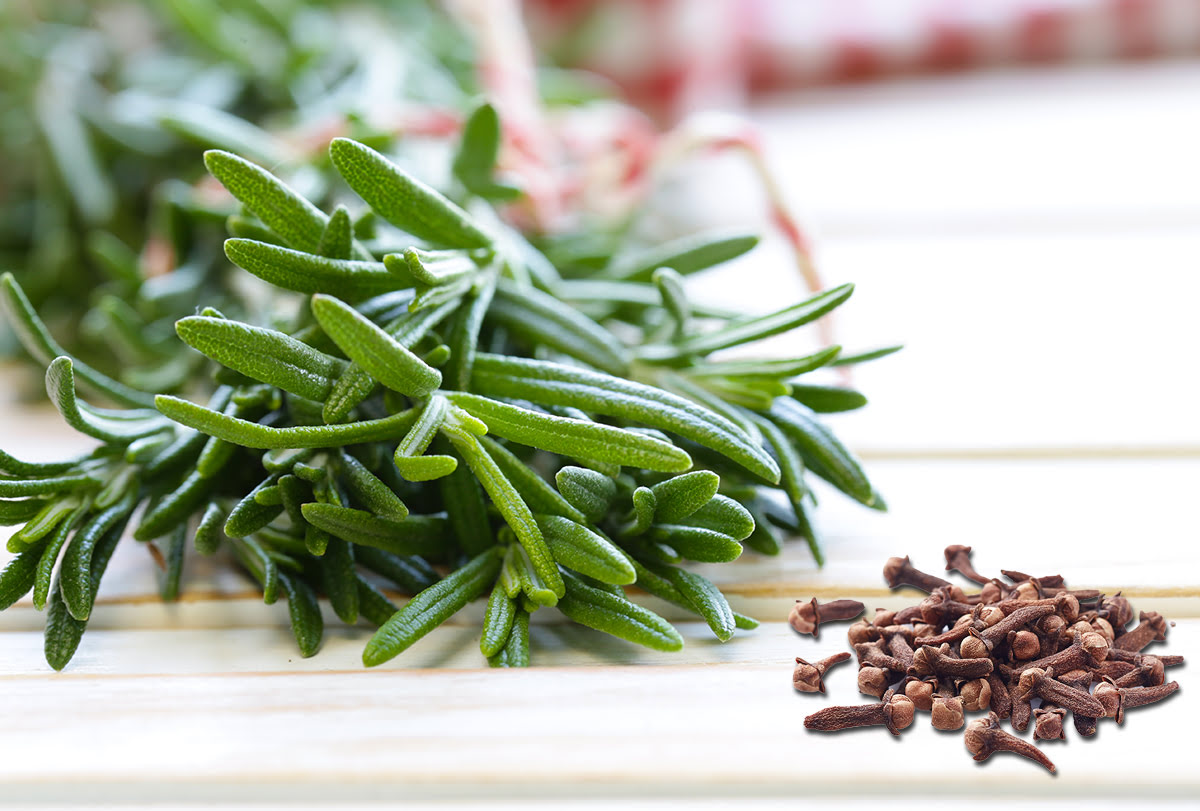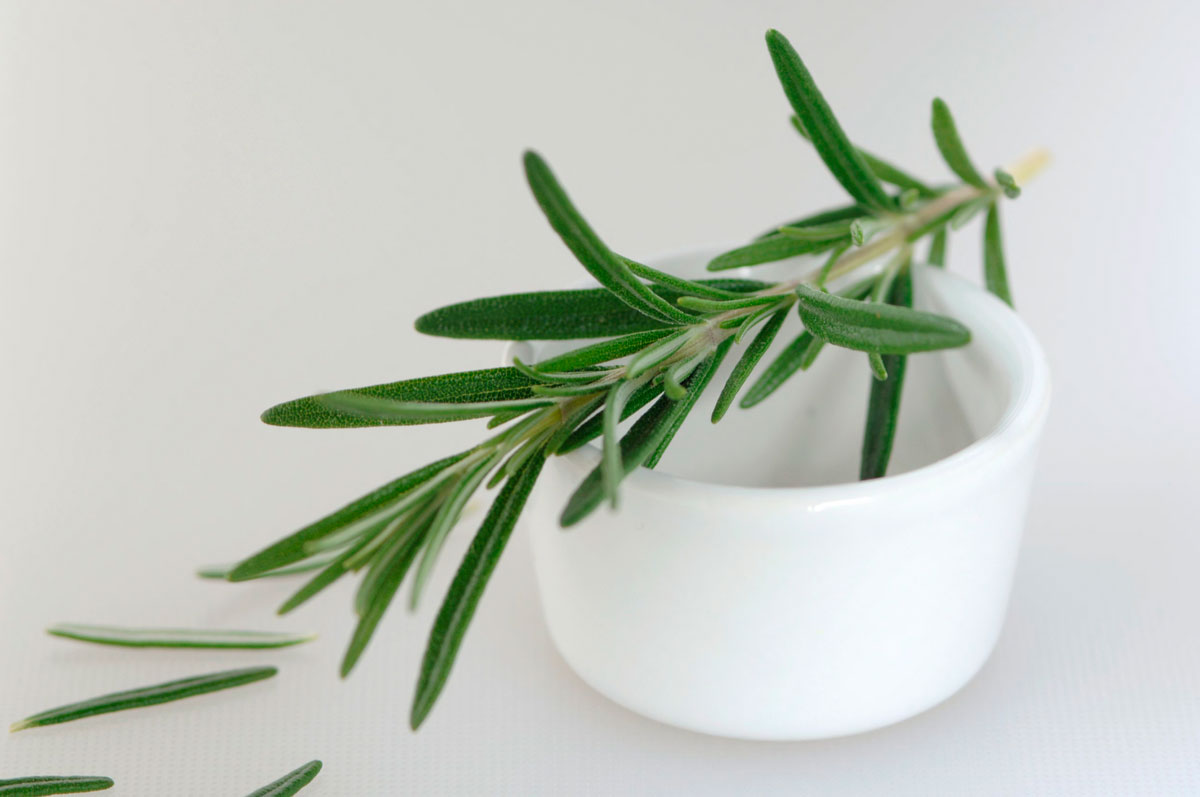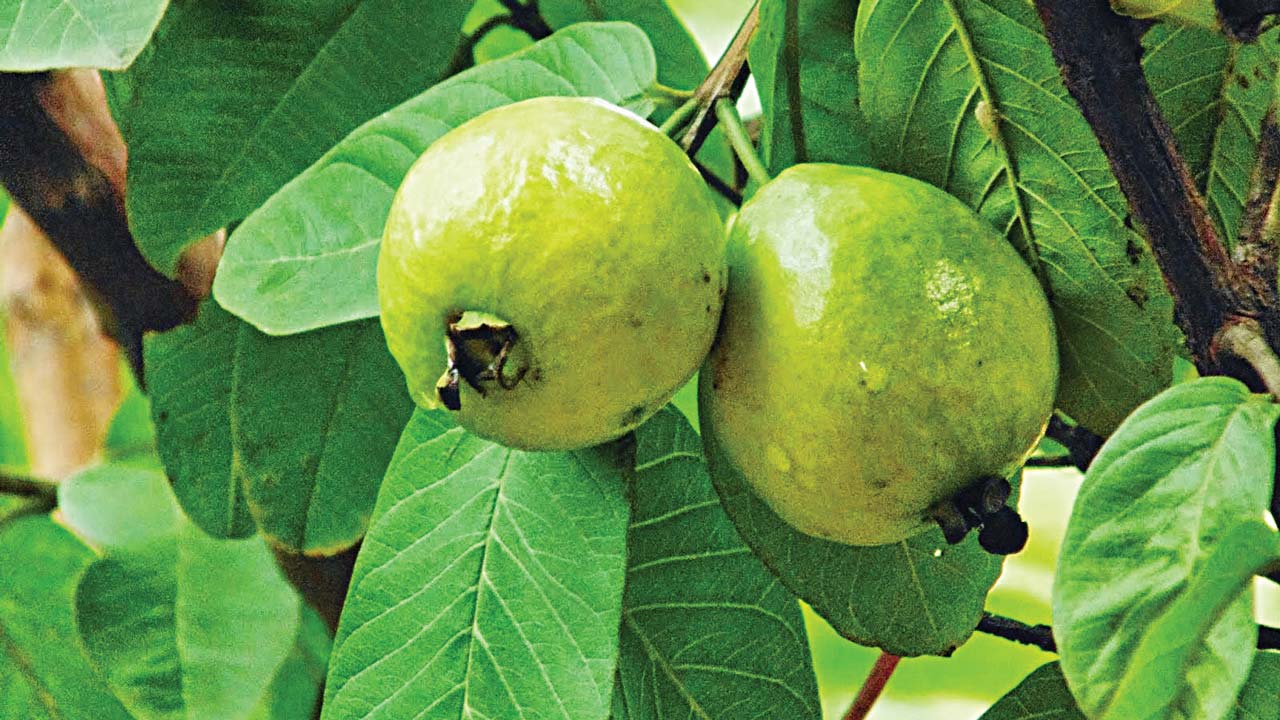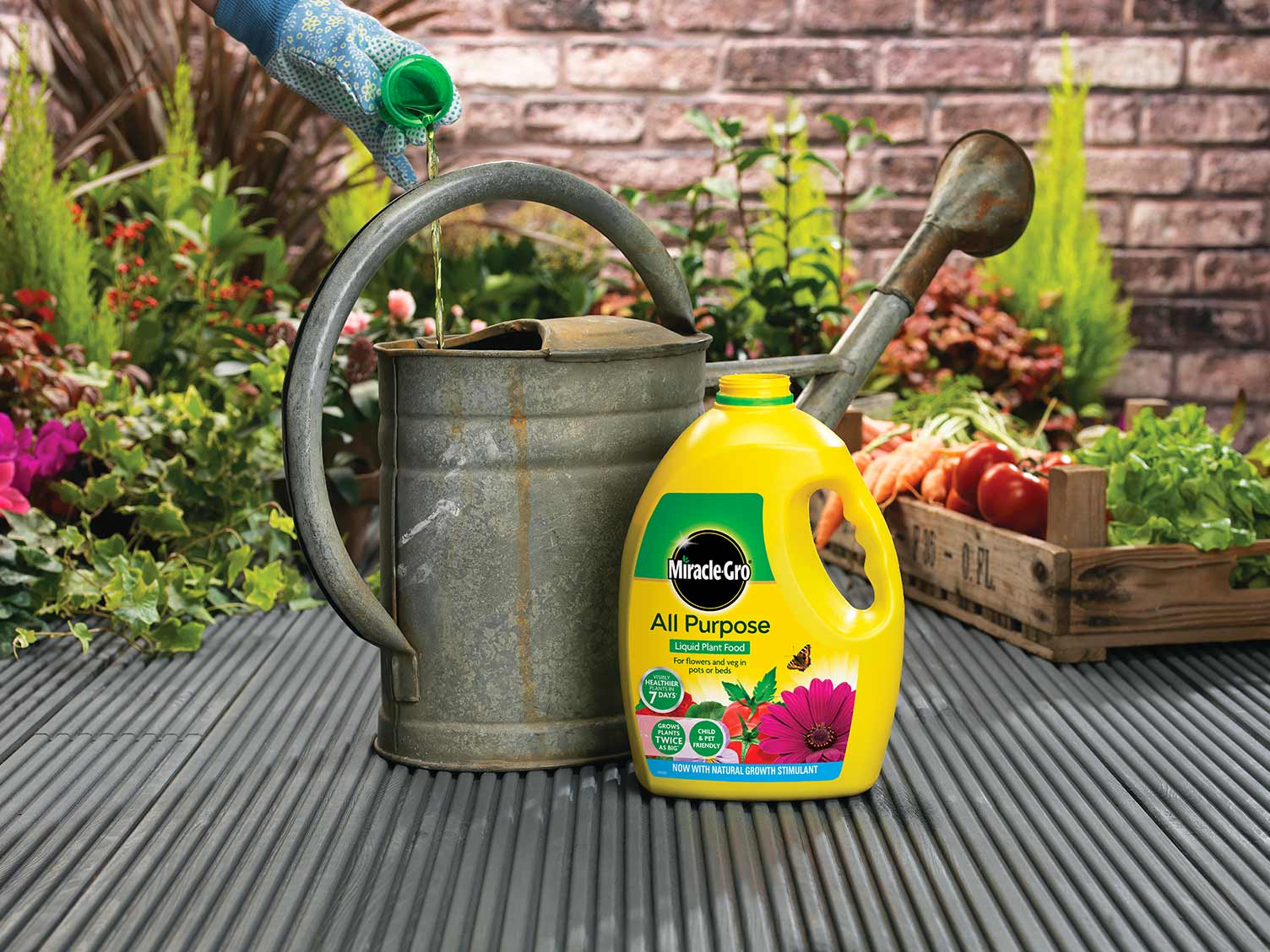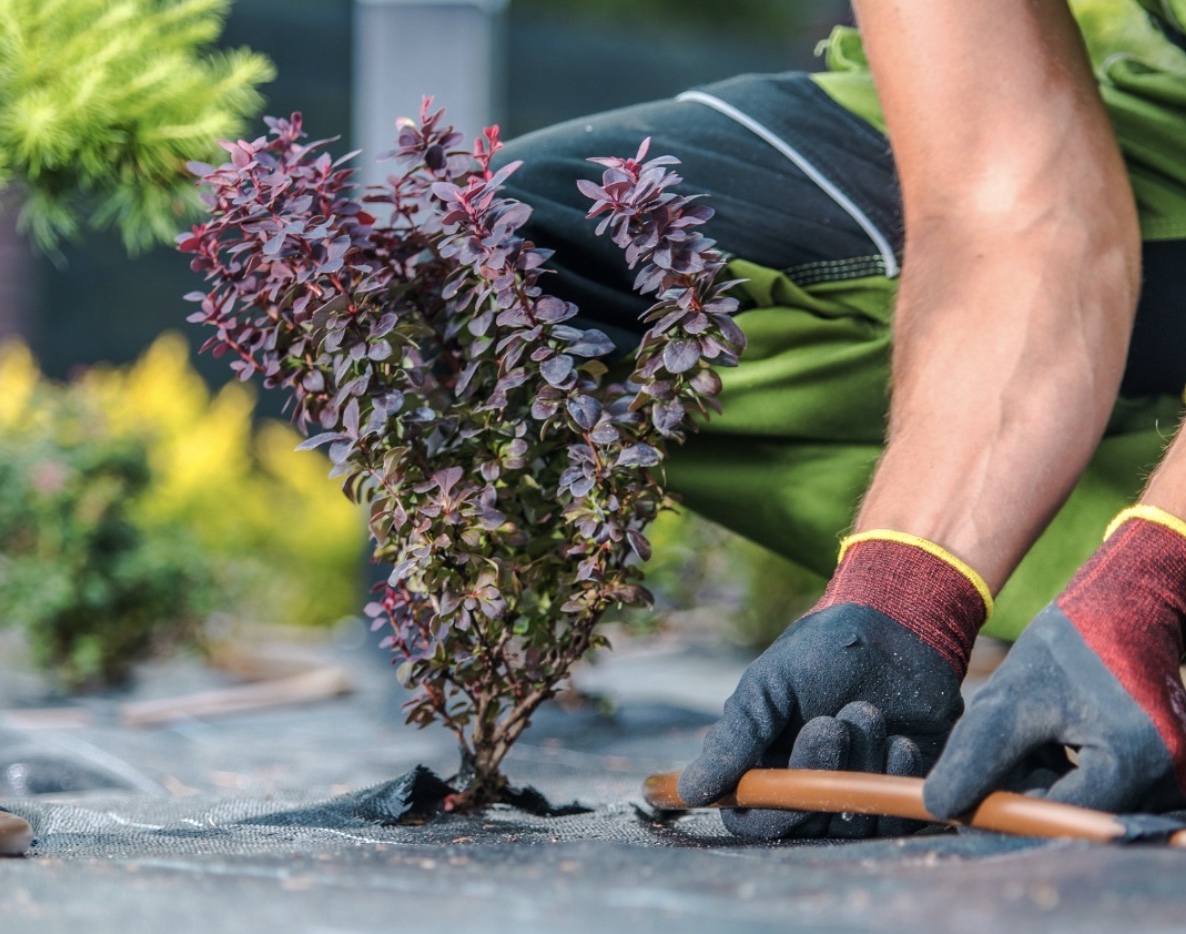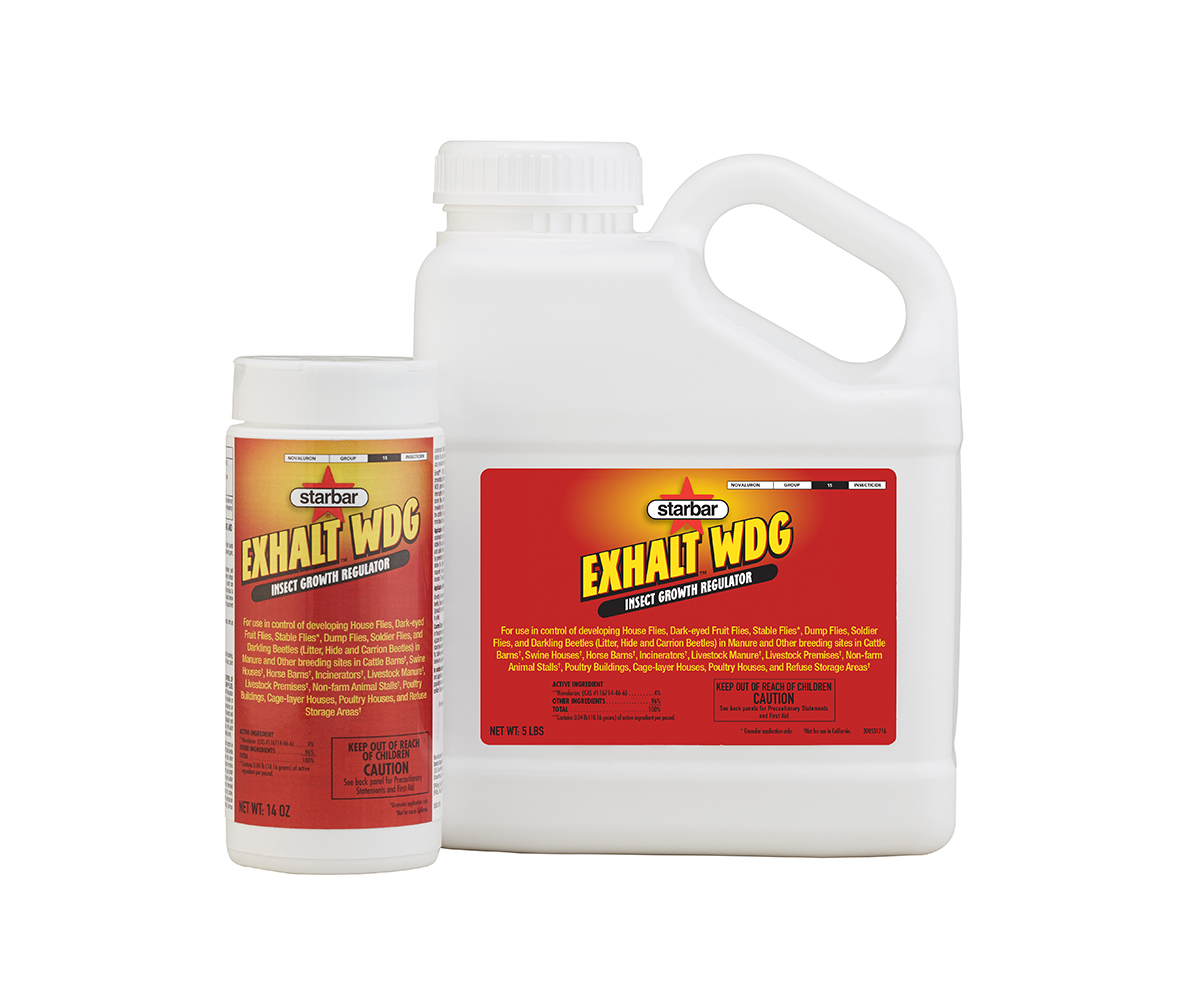Home>Gardening Tips and Tricks>Eco-Friendly Gardening>How To Prevent Algae Growth In Hydroponics
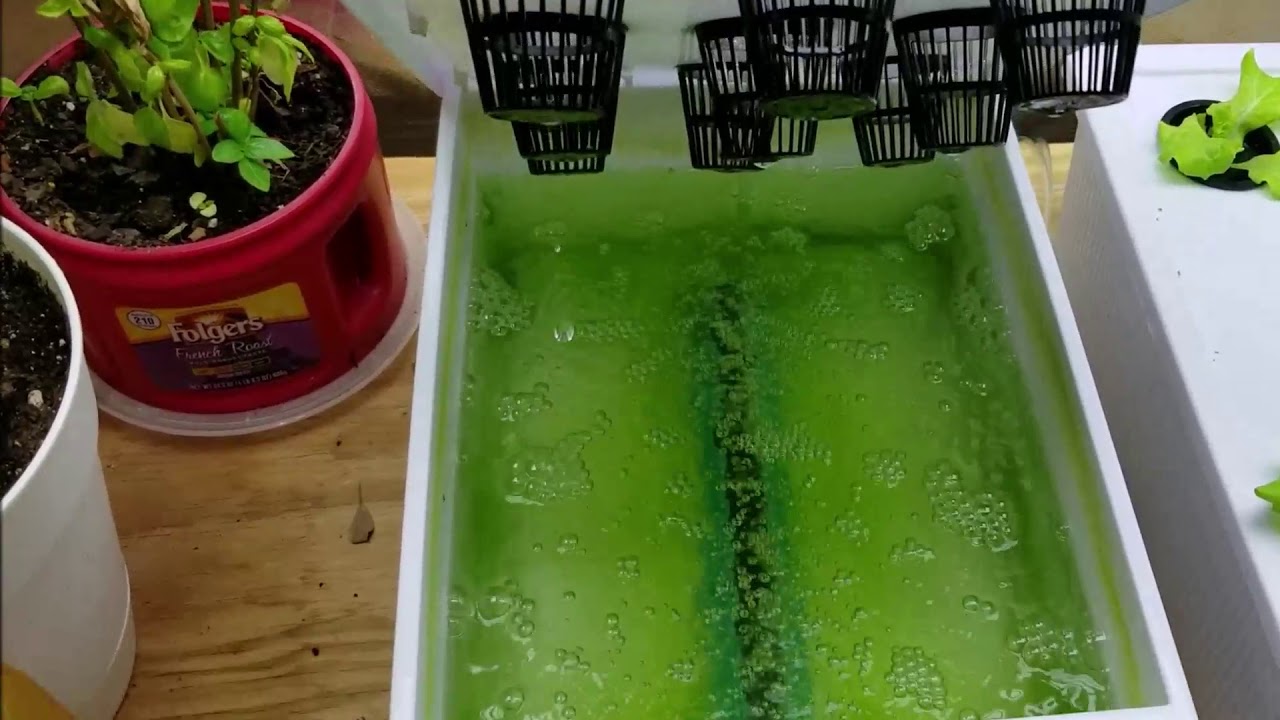

Eco-Friendly Gardening
How To Prevent Algae Growth In Hydroponics
Published: September 24, 2023
Learn how to prevent algae growth in hydroponics with eco-friendly gardening techniques. Keep your hydroponic system clean and optimized for healthy plant growth.
(Many of the links in this article redirect to a specific reviewed product. Your purchase of these products through affiliate links helps to generate commission for Chicagolandgardening.com, at no extra cost. Learn more)
Table of Contents
- Introduction
- Understanding Algae Growth in Hydroponics
- Causes of Algae Growth
- The Importance of Preventing Algae Growth
- Best Practices for Preventing Algae Growth in Hydroponics
- Proper Water Management
- Implementing Light Control Measures
- Regular Cleaning and Maintenance
- Using Beneficial Microbes or Natural Algaecides
- Maintaining Proper Nutrient Levels
- Ensuring Sufficient Oxygenation
- Conclusion
Introduction
Hydroponics is a popular method of gardening that allows plants to grow without soil. Instead, plants are grown in a carefully controlled nutrient-rich water solution. While hydroponics offers numerous benefits, such as higher crop yields and faster growth rates, it also presents challenges, one of which is algae growth.
Algae are microscopic organisms that thrive in water, and they can quickly take over a hydroponic system if left unchecked. Algae growth not only poses aesthetic issues, turning the water green and murky, but it can also have detrimental effects on plant health. Algae can block sunlight, compete for nutrients, and release toxins into the water, which can hinder plant growth and productivity.
Preventing algae growth in hydroponics is crucial to maintain a healthy and thriving garden. By implementing a few best practices, you can effectively control and minimize algae growth in your hydroponic system, ensuring optimal conditions for plant growth and development.
Understanding Algae Growth in Hydroponics
Before delving into the methods to prevent algae growth in hydroponics, it’s important to understand why and how algae thrives in these systems.
Algae growth in hydroponics is primarily influenced by three factors: light, nutrients, and water quality. Algae require light to photosynthesize and grow, and hydroponic systems typically provide an ideal environment for algae with their ample access to artificial light sources. Additionally, nutrients in the nutrient solution can also contribute to algae growth, as excess nutrients provide a food source for algae.
Water quality is another crucial factor. Poor water quality, such as high levels of organic matter or low dissolved oxygen content, can create favorable conditions for algae to thrive. The warm temperature of hydroponic water also promotes algae growth, making it essential to closely monitor and maintain an optimal temperature range.
Algae growth is often observed in various forms, such as green algae, blue-green algae (cyanobacteria), and brown algae. Each type has different characteristics and growth patterns, but they all share a common ability to colonize and multiply rapidly, leading to potential issues in a hydroponic system.
Understanding the factors that contribute to algae growth is crucial in developing effective prevention strategies. By addressing these factors and implementing proper maintenance techniques, you can successfully keep algae growth under control and maintain a healthy hydroponic garden.
Causes of Algae Growth
To effectively prevent and manage algae growth in hydroponics, it’s essential to understand the causes that contribute to its proliferation. Algae growth is influenced by several factors:
- Excessive light: Algae require light for photosynthesis, so excessive light exposure can promote their growth. This includes both natural sunlight and artificial lighting in hydroponic systems. Light leakage, improper light spectrum, or extended light duration can contribute to increased algae growth.
- Nutrient imbalance: Algae thrive on nutrients present in the water. If nutrient levels are imbalanced or excessive, algae can quickly multiply. This can occur when nutrient solutions are not properly measured or if organic matter breaks down, releasing additional nutrients into the water.
- Poor water quality: Water quality plays a significant role in algae growth. Factors such as high organic matter, low oxygen levels, and warm water temperature can create favorable conditions for algae to flourish. Dirty equipment, contaminated water sources, and insufficient filtration systems can also contribute to poor water quality.
- Poor system hygiene: Neglecting regular system maintenance and failing to clean equipment can lead to algae growth. Over time, organic matter, debris, and residue accumulate, providing a nutrient-rich environment for algae to thrive. Poor hygiene practices can also introduce pathogens and other contaminants that promote algae growth.
- Lack of oxygenation: Insufficient oxygenation in the water can create stagnant conditions, enabling algae growth. Adequate oxygen levels are crucial for plant and microbial health and can help suppress algae growth. Without proper aeration and circulation, algae can thrive and outcompete beneficial organisms.
By identifying and addressing the causes of algae growth, you can implement preventative measures to create an unfavorable environment for algae while ensuring optimal conditions for your hydroponic plants. It’s important to maintain a balance between providing the necessary nutrients for plants and minimizing algae’s ability to colonize and disrupt the system.
The Importance of Preventing Algae Growth
Preventing algae growth in your hydroponic system is of utmost importance for several reasons:
- Optimal plant growth: Algae compete with plants for essential nutrients, light, and oxygen. If left unchecked, algae can outcompete your plants, hindering their growth and productivity. By preventing algae growth, you ensure that your plants receive the necessary resources to thrive and reach their full potential.
- Water quality: Algae growth can lead to poor water quality, turning it green, murky, and foul-smelling. This not only affects the aesthetics of your hydroponic system but also has a negative impact on the overall health of your plants. By preventing algae growth, you maintain clean and clear water, which is essential for plant health and nutrient uptake.
- Pest and disease control: Algae provide a breeding ground for harmful pests and pathogens, such as fungus gnats and plant diseases. These pests and diseases can quickly spread and cause damage to your plants. By keeping algae growth under control, you reduce the risk of pest infestations and minimize the chances of disease outbreaks.
- System efficiency: Algae can clog irrigation lines, filters, and other system components, leading to reduced water flow and diminished system efficiency. This can result in uneven nutrient distribution and compromised plant health. Preventing algae growth helps keep your system running smoothly, maximizing nutrient delivery and ensuring optimal plant growth.
- Sustainability: Algae growth in hydroponics can be an indicator of an imbalanced and unhealthy system. By preventing algae growth and maintaining a well-functioning hydroponic garden, you contribute to sustainable agriculture practices. A well-maintained system ensures efficient resource utilization, reducing waste and promoting environmentally friendly gardening.
By recognizing the importance of preventing algae growth in hydroponics, you can take proactive measures to control and minimize it. This will create an ideal environment for your plants, promote optimal nutrient uptake, and ultimately lead to a successful and thriving hydroponic garden.
Best Practices for Preventing Algae Growth in Hydroponics
To effectively prevent algae growth in your hydroponic system, it’s important to implement a combination of proactive measures. By following these best practices, you can create an environment that discourages algae growth and promotes healthy plant development:
- Proper Water Management: Regularly monitor and maintain the pH, EC (electrical conductivity), and temperature of the water. Ensure that the nutrient solution is mixed accurately and adjust nutrient levels as needed. Proper water management helps maintain a balanced environment that discourages algae growth.
- Implementing Light Control Measures: Install light-blocking materials or covers on your hydroponic system to prevent excess light exposure. Use light timers to ensure that plants receive an appropriate amount of light without overexposing the water to light that can promote algae growth.
- Regular Cleaning and Maintenance: Clean your system regularly, removing any debris, dead plant matter, or algae growth. Thoroughly rinse growing trays, tubing, and any other equipment to prevent organic buildup. Regularly inspect and clean filters to ensure proper water flow and filtration.
- Using Beneficial Microbes or Natural Algaecides: Introduce beneficial microbes, such as Bacillus subtilis or fungi like Trichoderma, to your hydroponic system. These beneficial organisms can help outcompete algae and prevent their growth. Additionally, consider using natural algaecides, such as hydrogen peroxide or barley straw extract, to control algae growth in a safe and environmentally friendly manner.
- Maintaining Proper Nutrient Levels: Monitor nutrient levels regularly and adjust them based on the growth stage of your plants. Avoid overfeeding your plants as excess nutrients can feed algae growth. Follow recommended nutrient dosage guidelines and carefully measure nutrient solutions to prevent imbalances that can favor algal growth.
- Ensuring Sufficient Oxygenation: Aerating and oxygenating the water in your hydroponic system is crucial to prevent algae growth. Use air stones or diffusers to increase oxygen levels in the water. Proper oxygenation promotes a healthy environment for beneficial microbes and reduces the chances of stagnant conditions where algae can thrive.
By implementing these best practices consistently and maintaining a proactive approach, you can effectively prevent algae growth in your hydroponic system. Regular monitoring, proper maintenance, and creating an unfavorable environment for algae will ensure optimal conditions for plant growth and help you achieve successful results in your hydroponic gardening endeavors.
Proper Water Management
Proper water management is crucial for preventing algae growth in your hydroponic system. Here are some key practices to ensure optimal water conditions:
- Monitor and adjust pH and EC: Regularly test the pH and electrical conductivity (EC) of your nutrient solution. Maintain a pH level within the recommended range for your specific plants (usually between 5.5 and 6.5). Adjust the EC to ensure your plants are receiving the right amount of nutrients without creating excess amounts that can promote algae growth.
- Monitor water temperature: Algae thrive in warm water, so it’s important to monitor and maintain an appropriate water temperature. Most plants prefer water temperatures between 65 and 75°F (18 to 24°C), but this may vary depending on the plant species. Use a water thermometer to regularly check the temperature and make adjustments if necessary.
- Change the nutrient solution regularly: To prevent the accumulation of excess nutrients and organic matter, change the nutrient solution at regular intervals. The frequency of solution changes will depend on the size of your system, the plant’s growth stage, and the nutrient requirements. Generally, changing the nutrient solution every two to three weeks is recommended.
- Clean and sanitize reservoirs: Regularly clean and sanitize your reservoirs to remove any organic matter, residue, or algae. Empty the reservoir completely, scrub the walls and bottom with a mild bleach solution, and rinse thoroughly before refilling it with fresh water and nutrient solution.
- Maintain proper water circulation: Adequate water circulation is essential to prevent stagnant conditions that promote algae growth. Use water pumps or air stones to circulate and aerate the water. This promotes oxygenation and helps discourage algae growth by creating an environment where beneficial organisms can thrive.
- Use quality water: The quality of the water used in hydroponics can greatly impact algae growth. Use purified water or a reputable water filtration system to remove impurities and contaminants. Avoid using untreated tap water, as it may contain chemicals, heavy metals, or other substances that can promote algae growth.
By practicing proper water management techniques, you can maintain a balanced and healthy hydroponic system. Monitoring pH and EC, controlling water temperature, changing nutrient solutions regularly, cleaning reservoirs, ensuring water circulation, and using quality water will help create an environment that discourages algae growth and promotes optimal plant growth.
Implementing Light Control Measures
Controlling light exposure is essential for preventing algae growth in your hydroponic system. Here are some effective measures to implement:
- Use light-blocking materials: Cover your hydroponic system with light-blocking materials to prevent excess light penetration. This can be achieved by using lightproof tarps, grow tents, or shade cloth. Ensure that all openings, including vents and access points, are properly covered to prevent light leaks.
- Utilize light timers: Install light timers to automate the lighting schedule for your plants. This ensures that they receive the required amount of light without overexposing the water to excessive light. Set the light timers to mimic natural daylight cycles to provide optimal light conditions for your plants while minimizing algae growth.
- Choose appropriate light spectra: Select light bulbs or LED grow lights that emit the appropriate spectra for plant growth. Certain light spectra can promote algae growth more than others. Opt for lights that emphasize the red and blue spectra, as these are optimal for plant photosynthesis and growth while being less favorable for algae.
- Adjust light intensity: Some plants may require higher light intensity, but it’s important to ensure that the light intensity is appropriate and doesn’t contribute to excessive algae growth. Strike a balance by adjusting the distance between the light source and the plants to provide adequate light without promoting algae proliferation.
- Regularly inspect and clean light fixtures: Dust and debris can accumulate on light fixtures, reducing their effectiveness and potentially contributing to algae growth. Regularly inspect and clean your light fixtures to remove any buildup that can interfere with light penetration and efficiency.
- Avoid extended light duration: Providing plants with a 24-hour light cycle can lead to excessive algae growth. Just as plants require a dark period for rest, algae also need periods of darkness to be inhibited. Implement a proper light cycle with an adequate dark period to prevent algae from thriving.
By implementing these light control measures in your hydroponic system, you can effectively manage light exposure and minimize algae growth. Using light-blocking materials, utilizing light timers, choosing appropriate light spectra, adjusting light intensity, regularly cleaning light fixtures, and avoiding extended light duration will help create an environment that encourages plant growth while discouraging algae proliferation.
Regular Cleaning and Maintenance
Regular cleaning and maintenance are essential for preventing algae growth in your hydroponic system. Here are some important practices to keep in mind:
- Remove debris and dead plant matter: Regularly inspect your hydroponic system and remove any debris, dead plant matter, or decaying organic material. These can serve as a food source for algae and contribute to its growth. Clean the growing trays, channels, and any other surfaces to eliminate potential areas for algae colonization.
- Rinse and sanitize equipment: Regularly rinse and sanitize your equipment to prevent the buildup of organic matter and algae. This includes tubing, pumps, filters, and any other components of your hydroponic system. Use a mild bleach solution to sanitize the equipment and ensure thorough rinsing before reassembling.
- Monitor and clean filters: Filters play a crucial role in removing debris and maintaining water quality. Regularly monitor and clean your filters to prevent clogs and ensure proper water flow. Unclean filters can create stagnant conditions that favor algae growth.
- Inspect and clean irrigation lines: Check the irrigation lines for any blockages or buildup that may impede water flow. Disassemble and clean the irrigation lines periodically to ensure proper nutrient delivery and prevent stagnant water conditions where algae can thrive.
- Disinfect tools and containers: Clean and disinfect any tools or containers that come into contact with your hydroponic system. This includes scissors, measuring cups, and transplanting equipment. Disinfecting these items prevents the spread of pathogens and reduces the risk of introducing algae into your system.
- Maintain proper air circulation: Adequate air circulation helps prevent stagnant conditions and discourages algae growth. Ensure that your hydroponic system has proper ventilation and use fans or air pumps to promote air movement. Continuous air circulation also helps prevent excess moisture and create a healthier environment for your plants.
By incorporating regular cleaning and maintenance practices into your hydroponic routine, you can minimize the risk of algae growth. Creating a clean and well-maintained system eliminates potential food sources for algae and provides a healthier environment for your plants to thrive.
Using Beneficial Microbes or Natural Algaecides
In addition to proper maintenance practices, utilizing beneficial microbes or natural algaecides can be effective in preventing algae growth in your hydroponic system. Here are some methods you can consider:
- Introduce beneficial microbes: Beneficial microbes, such as Bacillus subtilis or Trichoderma, can help actively outcompete algae for nutrients and space. These beneficial organisms colonize the root zone and establish a symbiotic relationship with plants, promoting overall plant health and suppressing algal growth.
- Use natural algaecides: Natural algaecides can be a valuable tool in controlling algae growth without harming plants or the environment. Hydrogen peroxide is often used in small doses to reduce algae populations. Barley straw extract, a natural and organic option, can also be effective in inhibiting algae growth when used according to the product’s instructions.
- Consider UV sterilization: UV sterilization is a method that utilizes ultraviolet light to kill or inhibit algae growth in the water. It disrupts the DNA of algae, preventing their reproduction. UV sterilizers can be installed in the water circulation system to provide continuous protection against algae colonization.
- Implement biofilters: Biofilters incorporate beneficial bacteria that help to break down organic matter and remove excess nutrients from the water. By reducing nutrient availability, biofilters minimize the conditions that promote algae growth. This is especially beneficial for systems with high organic load or nutrient imbalances.
- Practice crop rotation: Implementing a crop rotation strategy can help disrupt the life cycle of algae and prevent its continuous growth. By changing the plant varieties or species in your hydroponic system, you can reduce the risk of algae adapting and multiplying in response to specific plant types.
When using beneficial microbes or natural algaecides, it’s important to follow the recommended dosage and application instructions provided by the manufacturer. As with any treatment, it’s essential to monitor your hydroponic system and ensure that plants are not negatively affected.
By incorporating these methods into your hydroponic system, you can effectively control and prevent algae growth. Beneficial microbes, natural algaecides, UV sterilization, biofilters, and crop rotation strategies offer eco-friendly and sustainable solutions to maintain a healthy and algae-free hydroponic garden.
Maintaining Proper Nutrient Levels
Maintaining proper nutrient levels is crucial for preventing algae growth and ensuring the optimal growth of your hydroponic plants. Here are some key practices to consider:
- Monitor nutrient solution: Regularly monitor the nutrient levels in your hydroponic system using an EC meter. Ensure that the nutrient solution is within the recommended range for your specific plants. Avoid overfeeding your plants, as excessive nutrient levels can promote algae growth.
- Measure nutrients accurately: Accurate measurement of nutrients is essential to maintain a balanced nutrient solution. Use precise measuring equipment, such as graduated cylinders or digital scales, to ensure accurate dosing of nutrients. Follow the manufacturer’s instructions for the specific nutrient solution you are using.
- Adjust nutrient levels: Adjust nutrient levels as your plants progress through different growth stages. Young seedlings and vegetative plants have different nutrient requirements compared to flowering or fruiting plants. Pay attention to the nutrient ratios specified for each growth stage to avoid excess nutrient buildup that can fuel algae growth.
- Flush the system: Periodically flush your hydroponic system with fresh, pH-balanced water to remove any excess nutrients, salts, or accumulated organic matter. Flushing helps restore nutrient balance and prevents nutrient buildup that can promote algae growth. Flushing is particularly important before transitioning between growth stages.
- Use balanced nutrient solutions: Ensure that your nutrient solution contains a balanced mix of essential macro and micronutrients. An imbalanced nutrient solution can lead to deficiencies or excesses, affecting plant health and creating an environment favorable for algae growth. Use reputable commercially available nutrient solutions or formulate your own solution with care.
- Monitor and adjust pH levels: pH plays a crucial role in nutrient availability and uptake by plants. Regularly monitor and adjust the pH of your nutrient solution. Most plants thrive in a pH range of 5.5 to 6.5. Algae growth can be encouraged by significant pH imbalances, so maintaining the appropriate pH level is essential for preventing algae proliferation.
By maintaining proper nutrient levels in your hydroponic system, you provide your plants with the necessary nutrients for healthy growth while minimizing the risk of algal overgrowth. Regular monitoring, accurate nutrient measurement, adjustment based on plant growth stages, periodic flushing, using balanced nutrient solutions, and maintaining the proper pH will contribute to an optimal growing environment and prevent algae-related issues.
Ensuring Sufficient Oxygenation
Proper oxygenation is essential to prevent algae growth and maintain a healthy hydroponic system. Here are some important considerations for ensuring sufficient oxygenation:
- Use air stones or diffusers: Install air stones or diffusers in your hydroponic system to increase oxygen levels in the water. These devices create tiny bubbles that promote oxygen exchange between the air and the water, ensuring that plant roots and beneficial microorganisms receive an adequate oxygen supply.
- Optimize water circulation: Proper water circulation helps distribute oxygen throughout the system. Use water pumps or recirculating systems to ensure that water is continuously moving and not stagnant. Stagnant water can create an environment where algae can thrive, so maintaining proper water circulation is crucial.
- Increase aeration during hot periods: In warm weather or during the summer months, water temperatures can rise, reducing the oxygen-carrying capacity of water. Increase aeration and water movement during these periods to compensate for the decreased oxygen availability and prevent algae growth.
- Monitor dissolved oxygen levels: Regularly measure the dissolved oxygen levels in your hydroponic system using a dissolved oxygen meter. Plants and beneficial microorganisms require oxygen for respiration, and insufficient dissolved oxygen levels can inhibit their growth and promote algae growth. Aim for dissolved oxygen levels between 6 and 8 mg/L.
- Avoid over-watering: Over-watering can lead to waterlogged conditions and increase the risk of oxygen depletion. Ensure proper drainage and avoid over-saturating the growing medium to maintain oxygen levels within the root zone. Healthy roots contribute to better nutrient uptake and compete against algae for resources.
- Monitor and maintain water temperature: Water temperature plays a role in oxygen solubility. Warmer water holds less oxygen, while cooler water can hold more. Monitor and maintain an appropriate water temperature to maximize oxygen availability. Additionally, maintaining a proper water temperature can also help inhibit algae growth directly.
By ensuring sufficient oxygenation in your hydroponic system, you promote a healthy environment for plant growth while inhibiting algae proliferation. Incorporate proper aeration techniques, optimize water circulation, monitor dissolved oxygen levels, avoid over-watering, and regulate water temperature to create favorable conditions for plants and beneficial microorganisms and discourage algae growth.
Conclusion
Preventing algae growth in your hydroponic system is essential for maintaining a healthy and productive garden. Algae can hinder plant growth, reduce water quality, and disrupt overall system efficiency. By implementing the best practices discussed, you can effectively control and minimize algae growth:
- Practice proper water management by monitoring pH, EC, and water temperature, and changing the nutrient solution regularly.
- Implement light control measures through the use of light-blocking materials, light timers, and appropriate light spectra.
- Perform regular cleaning and maintenance, including removing debris, sanitizing equipment, and ensuring proper air circulation.
- Consider the use of beneficial microbes or natural algaecides to help suppress algae growth and maintain a healthy microbial balance.
- Maintain proper nutrient levels by monitoring and adjusting nutrient solutions based on plant growth stages.
- Ensure sufficient oxygenation through the use of air stones or diffusers, optimizing water circulation, and monitoring dissolved oxygen levels.
By diligently following these best practices, you can create an environment that discourages algae growth and provides optimal conditions for plant growth and development. Regular monitoring, proper maintenance, and attention to detail are important to prevent algae growth in hydroponics.
Remember, each hydroponic system is unique, and it may require some experimentation and adjustments to find the perfect balance for your specific setup. Continually evaluate your system, monitor plant health and water quality, and make necessary modifications to ensure long-term success in preventing algae growth.
With proactive algae prevention measures in place, you can enjoy the benefits of a healthy and thriving hydroponic garden, achieving higher crop yields and faster growth rates while promoting sustainable gardening practices.
